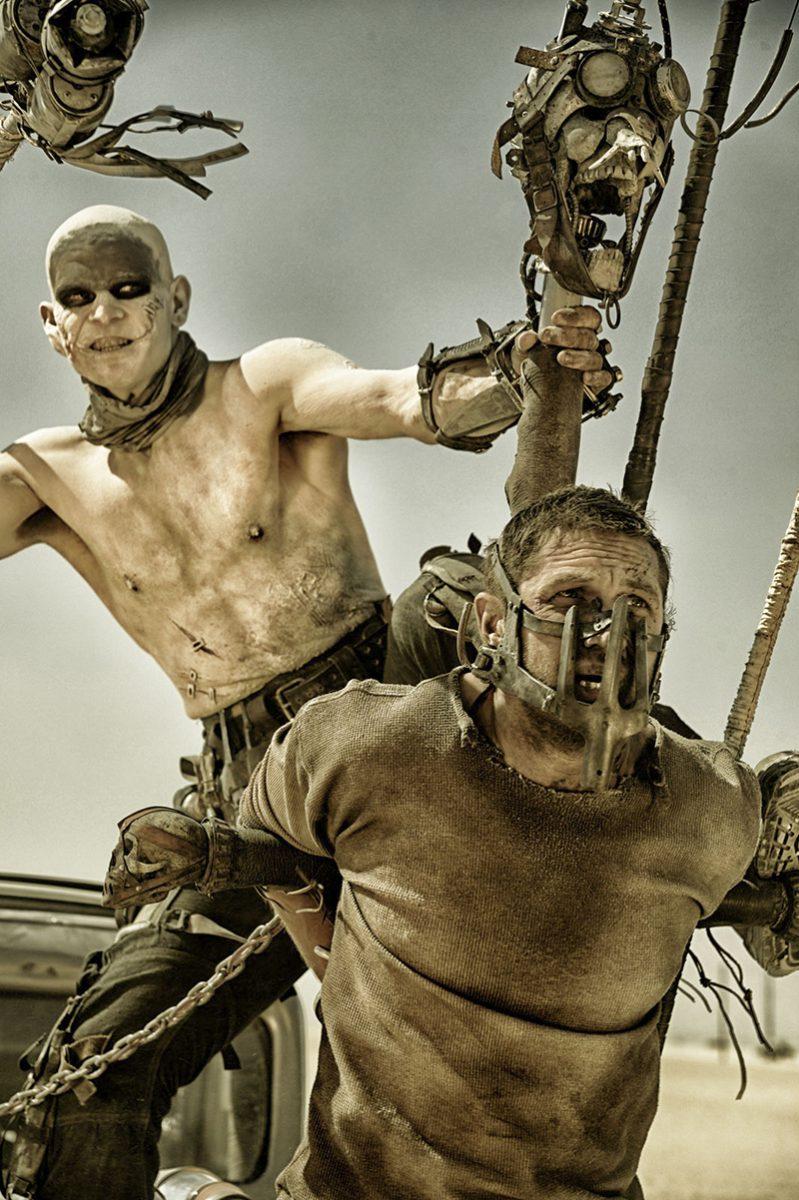I don’t have to tell you that “Mad Max: Fury Road” is a good film. According to RottenTomatoes.com, the film is minor degrees from perfect. It currently holds a 98%, making it the tenth highest rated film on the website.
Why the lavish praise? Recently, action films have been treated like the filler of cinema: all spectacle and no substance. One only need think of the myriad of “Transformers” flicks that have come out in recent years. Notoriously big at the box office while also being panned by critics, the films are emblematic of a larger problem: action films are losing their bite.
This is easier to understand given the context of the MPAA rating system. Films with the PG-13 rating are allowed a wider audience simply because no one is turned away at the door. More people in seats means more money for the production company. It’s the reason “The Hunger Games,” a film about the warring of adolescents, could become a massive cultural icon. Imagining that film as a hard R leads to images of child murder and death that, while perhaps more honest, would certainly haze crowds and critics alike.
So it’s safer, for both production companies and audiences, to create action films that teeter on the edge between safety and progression, between formula and experimentation.
Unfortunately, this “safety net” leads to repetition. It leads Hollywood to produce films such as 2013’s “Olympus Has Fallen” and “White House Down,” two nearly identical films about a terrorist attack on The White House. It’s why “Taken” is a trilogy. It points to Hollywood using film as a business model rather than a medium of creative artistic expression.
Thankfully, director George Miller brings an artistic vision to “Fury Road” that transcends the current state of action film while also catering to everything audiences and critics could ask for.
“Mad Max: Fury Road” is the continuation of a franchise George Miller created when he released “Mad Max” in 1979. In the film, Mel Gibson plays Max Rockatansky, a road cop in a dystopian near-future where roaming gangs terrorize what’s left of society. The film, which cost a mere $400,000 to make, grossed over $100 million, and, until 1999’s “The Blair Witch Project,” set the record for the highest profit-to-cost ratio ever for a film. Needless to say, the film produced two sequels, 1981’s “Mad Max 2: Road Warrior” and 1985’s “Mad Max Beyond Thunderdome,” both of which influenced film making.
But that was 30 years ago. Filmmaking has changed. How is the new “Mad Max” relevant?
To discuss everything the film does right would take ages, so I’ll put it succinctly: “Mad Max: Fury Road” is crazy. It is absolutely insane. It takes everything action movies do right and pushes them to the brink. The fight scenes, the car chases, the explosions, the pacing, the camerawork, everything. If you have ever enjoyed any aspect of an action movie, there is something for you here.
But it’s also much more than that. The film, which is set in a post-apocalyptic desert wasteland, follows Max as he is captured and enslaved by a cult of “war boys” serving a master known as Immortan Joe, played by Hugh Keays-Byrne. But Max is not the protagonist here. Instead, he is companion to Imperator Furiosa, played by Charlize Theron, a high-ranking officer in the war boy cult who attempts to flee, bringing with her Immortan Joe’s wives — five women selected to act as Joe’s “breeders.”
This plot line implies a change in the atmosphere of action filmmaking. It takes female characters and, instead of using them as motivation for the male protagonist, casts them as integral pieces to the movement of the plot. To contrast this, take for example 2014’s “John Wick.” Hailed as Keanu Reeves’s renaissance, the film surged interest in the art of the action film. In it, Wick’s motivation is the killing of his dog, which exists as an extension of his deceased wife’s love. Without the death of his wife, Wick has no compulsion to enact the events of the film. In this way, the woman is not actually a part of the story, but merely a source of motivation. Whereas John Wick’s character matters, his wife’s does not. She could be any woman because all that matters is that she is dead.
However, the female characters in “Fury Road” are as well-established as anything else in the film. They are badass, hardened by the crumbling of society, and yet entirely human, driven by clear motivations and emotions. As one of the breeders says, “We are not things.”
Alongside its appreciation of women, the film also holds the audience to a high degree. “Fury Road” has a massive universe, one that has been gestating in George Miller’s mind for over thirty years, and yet it never once wastes time on unneeded exposition. The film employs a simple rule: “Show, don’t tell.” Instead of giving audiences a talking head for five minutes to explain why irradiated cult followers need live blood transfusions to live past a certain age, Miller just shows one in use, strapping Max to the front of a car as a “blood bag.” It’s visual storytelling that side-steps the need to appeal to audience’s lowest-common-denominator and allows viewers to create their own interpretations. It’s creative, interesting, and above all, respectful.
This is not me saying that “Mad Max: Fury Road” is for everyone. If you aren’t interested in kinetic action films, there might not be much here to persuade you. Dialogue is kept to a minimum, and the film doesn’t rely on drama to accelerate.
But if you’ve ever watched an action film and enjoyed it, you owe it to yourself to see “Mad Mad: Fury Road.”
















